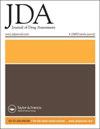Impact of outpatient specialty pharmacy on medication adherence in post-kidney transplant patients
IF 2.4
引用次数: 0
Abstract
Abstract Background: Post-kidney transplant patients are initiated on a complicated medication therapy regimen including 6-7 new medications, with each consisting of multiple tablets or capsules. Medication adherence may be difficult due to the complexity of the regimen and non-adherence can lead to an increased risk of rejection. At Yale New Haven Transplant Center (YNHTC), patients are presented with the option to receive their medications through Outpatient Pharmacy Services (OPS), a Yale New Haven Health specialty pharmacy. Aims: The objective of this study is to determine the impact of OPS on patients’ medication adherence. Methods: A retrospective, single center, chart review was conducted of 50 patients who received a kidney transplant at YNHTC between January 2017 and June 2017. Exclusion criteria included patients who were actively enrolled in a research study, deceased within one year of transplant, or had incomplete medical records. Refill data of patients’ prescribed doses of anti-rejection medications (tacrolimus, cyclosporine, mycophenolate and azathioprine) was manually retrieved from pharmacies. Adherence was assessed by calculating the proportion of days covered (PDC) in a 365-day time period. The adherence rate between each drug class was then averaged. The primary outcome was the relationship between the patient’s pharmacy and the adherence rate (PDC). Patients were divided into three groups; patients who use OPS (n = 26), patients who use both OPS and another pharmacy (n = 8), and patients who use another pharmacy only (n = 16). Secondary outcomes included pre-transplant adherence survey, MediSetGo score, and number of post-transplant readmissions (hospital stay greater than 24 hours). Results: PDC ranged between 65.5-100% for OPS (average = 94.8%), 56.5–98.5% for OPS and another pharmacy (average = 83.2%), and 53.5–100% for another pharmacy only (average = 91.8%). The PDC was significantly lower for patients who used OPS and another pharmacy compared to either OPS alone or another pharmacy alone (p = .045). Secondary endpoints studied, such as third-party payer, pre-transplant adherence survey and MediSetGo score, were not found to be related to the PDC. Conclusions: Use of OPS alone did not impact the one-year medication adherence rate of post kidney transplant patients. However, a patient’s medication adherence rate may be related to the use of multiple pharmacies versus one single pharmacy. Further studies to investigate this relationship should be conducted.门诊专科药房对肾移植后患者服药依从性的影响
背景:肾移植后患者开始一个复杂的药物治疗方案,包括6-7种新药,每种药物由多个片剂或胶囊组成。由于治疗方案的复杂性,药物依从性可能很困难,不依从性可能导致排斥反应的风险增加。在耶鲁纽黑文移植中心(YNHTC),患者可以选择通过门诊药房服务(OPS)接受药物治疗,这是耶鲁纽黑文健康中心的一家专业药房。目的:本研究的目的是确定OPS对患者药物依从性的影响。方法:对2017年1月至2017年6月在YNHTC接受肾移植的50例患者进行回顾性、单中心、图表回顾。排除标准包括积极参加研究的患者,移植后一年内死亡的患者,或有不完整的医疗记录的患者。人工从药房检索患者抗排斥药物(他克莫司、环孢素、霉酚酸盐和硫唑嘌呤)处方剂量的补充数据。通过计算365天内覆盖天数(PDC)的比例来评估依从性。然后取每个药物类别之间的依从率的平均值。主要结局是患者用药与依从率(PDC)之间的关系。患者分为三组;使用OPS的患者(n = 26)、同时使用OPS和其他药房的患者(n = 8)和仅使用其他药房的患者(n = 16)。次要结局包括移植前依从性调查、MediSetGo评分和移植后再入院次数(住院时间大于24小时)。结果:OPS组的PDC值为65.5 ~ 100%(平均= 94.8%),OPS联合其他药房组的PDC值为56.5 ~ 98.5%(平均= 83.2%),单独其他药房组的PDC值为53.5 ~ 100%(平均= 91.8%)。与单独使用OPS或单独使用另一种药房相比,使用OPS和另一种药房的患者PDC显着降低(p = 0.045)。研究的次要终点,如第三方支付者、移植前依从性调查和MediSetGo评分,未发现与PDC相关。结论:单独使用OPS对肾移植术后患者1年服药依从率无影响。然而,患者的药物依从率可能与使用多个药房与单一药房有关。应该进行进一步的研究来调查这种关系。
本文章由计算机程序翻译,如有差异,请以英文原文为准。
求助全文
约1分钟内获得全文
求助全文

 求助内容:
求助内容: 应助结果提醒方式:
应助结果提醒方式:


